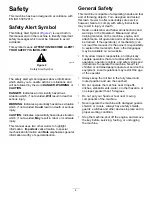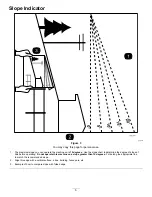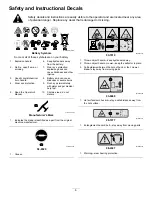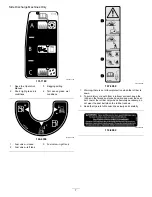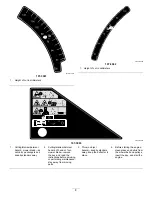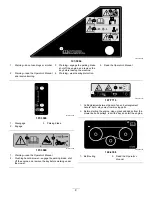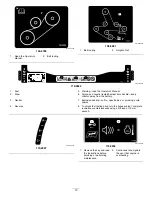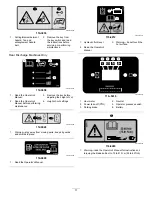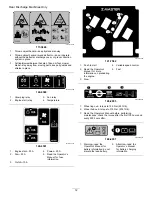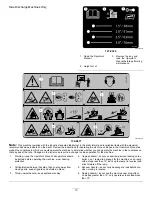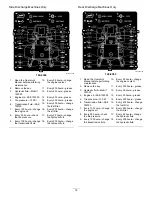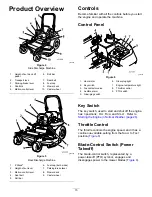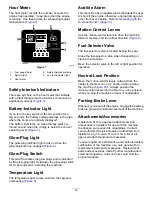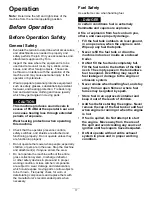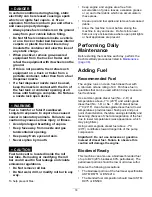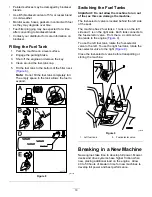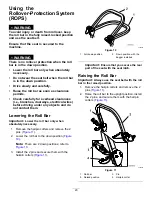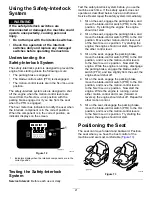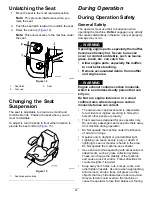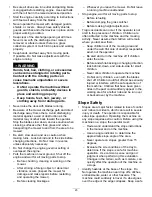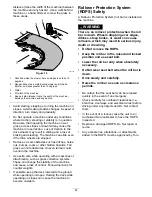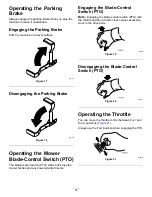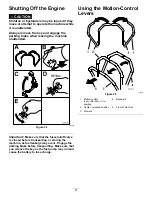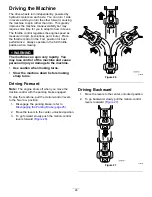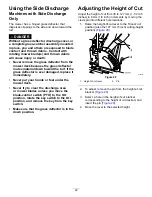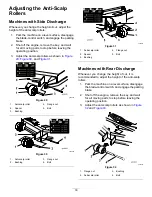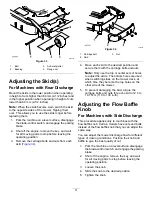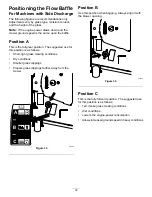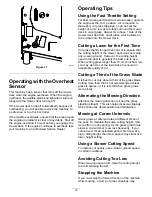
DANGER
In certain conditions during fueling, static
electricity can be released causing a spark
which can ignite fuel vapors. A fire or
explosion from fuel can burn you and others
and cause property damage.
•
Always place fuel containers on the ground
away from your vehicle before filling.
•
Do Not fill fuel containers inside a vehicle
or on a truck or trailer bed because interior
carpets or plastic truck bed liners may
insulate the container and slow the loss of
any static charge.
•
When practical, remove gas-powered
equipment from the truck or trailer and
refuel the equipment with its wheels on the
ground.
•
If this is not possible, then refuel such
equipment on a truck or trailer from a
portable container, rather than from a fuel
dispenser nozzle.
•
If a fuel dispenser nozzle must be used,
keep the nozzle in contact with the rim of
the fuel tank or container opening at all
times until fueling is complete. Do Not use
a nozzle lock open device.
WARNING
Fuel is harmful or fatal if swallowed.
Long-term exposure to vapors has caused
cancer in laboratory animals. Failure to use
caution may cause serious injury or illness.
•
Avoid prolonged breathing of vapors.
•
Keep face away from nozzle and gas
tank/container opening.
•
Keep away from eyes and skin.
•
Never siphon by mouth.
CAUTION
Fuel tank vent is located inside the roll
bar tube. Removing or modifying the roll
bar could result in fuel leakage and violate
emissions regulations.
•
Do Not remove roll bar.
•
Do Not weld, drill, or modify roll bar in any
way.
To help prevent fires:
•
Keep engine and engine area free from
accumulation of grass, leaves, excessive grease
or oil, and other debris which can accumulate in
these areas.
•
Clean up oil and fuel spills and remove fuel soaked
debris.
•
Allow the machine to cool before storing the
machine in any enclosure. Do Not store near
flame or any enclosed area where open pilot lights
or heat appliances are present.
Performing Daily
Maintenance
Before starting the machine each day, perform the
Each Use/Daily procedures listed in
(page 38)
.
Adding Fuel
Recommended Fuel
The engine runs on clean, fresh diesel fuel with
a minimum octane rating of 40. Purchase fuel in
quantities that can be used within 30 days to ensure
fuel freshness.
Use summer-grade diesel fuel (No. 2-D) at
temperatures above -7°C (20°F) and winter-grade
diesel fuel (No. 1-D or No. 1-D/2-D blend) below
-7°C (20°F). Use of winter-grade diesel fuel at lower
temperatures provides lower flash point and pour
point characteristics, therefore easing startability and
lessening chances of chemical separation of the fuel
due to lower temperatures (wax appearance, which
may plug filters).
Using summer-grade diesel fuel above -7°C
(20°F) contributes toward longer life of the pump
components.
Important:
Do not use kerosene or gasoline
instead of diesel fuel. Failure to observe this
caution will damage the engine.
Biodiesel Ready
This machine can also use a biodiesel blended fuel
of up to B20 (20% biodiesel, 80% petrodiesel). The
petrodiesel portion should be low or ultra low sulfur.
Observe the following precautions:
•
The biodiesel portion of the fuel meet specification
ASTM D6751 or EN14214.
•
The blended fuel composition should meet ASTM
D975 or EN590.
18
Summary of Contents for Z Master Professional 7000 Series
Page 2: ......
Page 84: ...Schematics g012068 Wire Diagram Rev A 82...
Page 86: ......
Page 177: ...Schaltbilder g012068 Schaltbild Rev A 91...
Page 270: ...Sch mas g012068 Sch ma de c blage Rev A 92...
Page 271: ...Remarques...
Page 272: ...Remarques...
Page 274: ......
Page 362: ...Schema s g012068 Elektrisch schema Rev A 88...
Page 364: ......

